In my kitchen, banana bread has always been more than just a simple treat; it’s a canvas for creativity, a recipe that evolves with each baking session.
My fascination with this beloved classic has led me down a path of experimentation, particularly with the addition of nuts.
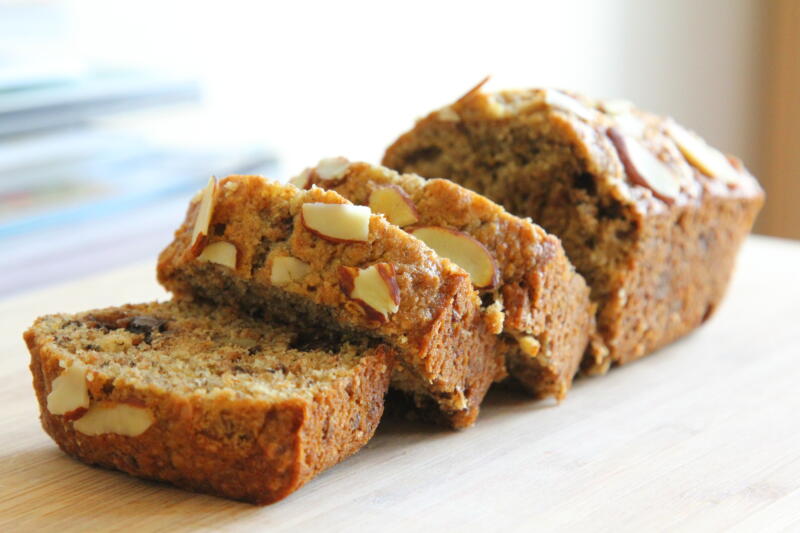
Through trial and error, I’ve discovered how different nuts can transform the texture, flavor, and nutritional profile of banana bread, making each loaf uniquely delightful.
Join me as I share my personal insights into the world of nuts in banana bread, from the classic to the unconventional, and how these small additions can make a big impact.
Highlights
- My Nutty Experimentation: I’ve discovered that each nut, from classic walnuts to exotic macadamias, adds its own unique twist, making my banana bread recipes a playground for flavor and texture.
- A Nutritional Plus: Adding nuts not only elevates the taste and texture but also boosts the nutritional value, enriching my banana bread with vitamins, minerals, and healthy fats.
- Prep Secrets: I’ve learned that the secret to unlocking the nuts’ full flavor lies in proper preparation—lightly toasting and chopping them ensures they blend perfectly into the bread, offering that irresistible crunch in every bite.
In this article:
Why Add Nuts to Banana Bread?
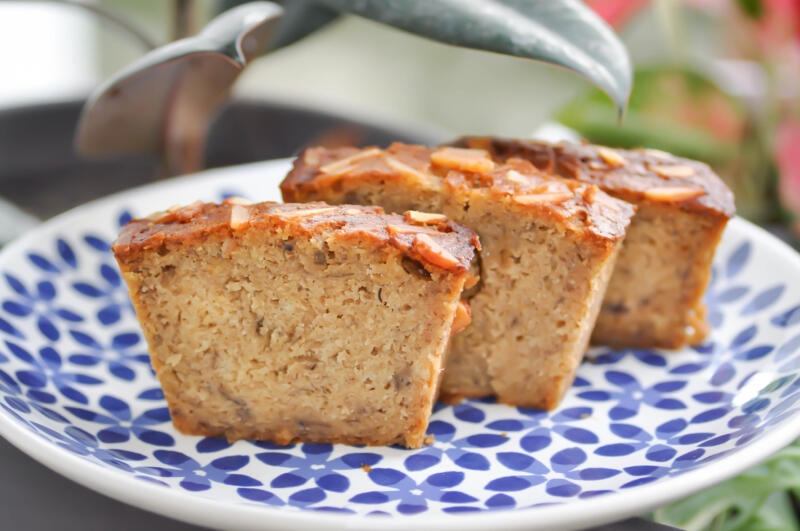
Adding nuts to banana bread is a flavorful choice that many bakers swear by.
The addition of nuts not only enhances the taste of the bread but also adds a delightful crunch that contrasts beautifully with the soft, moist texture of the banana bread.
This crunch, coupled with the nutty flavor that permeates the bread, makes every bite a sensory delight.
There are several types of nuts that you can experiment with in your banana bread.
The most popular choices include walnuts, pecans, almonds, hazelnuts, and macadamia nuts.
Each of these nuts brings a unique flavor profile and texture to the bread, making it a versatile recipe that you can tweak to your liking.
Common Types of Nuts for Banana Bread
Each nut, with its unique flavor and texture, can transform the humble banana bread into a gourmet delight. Let’s explore how!
1. Walnuts
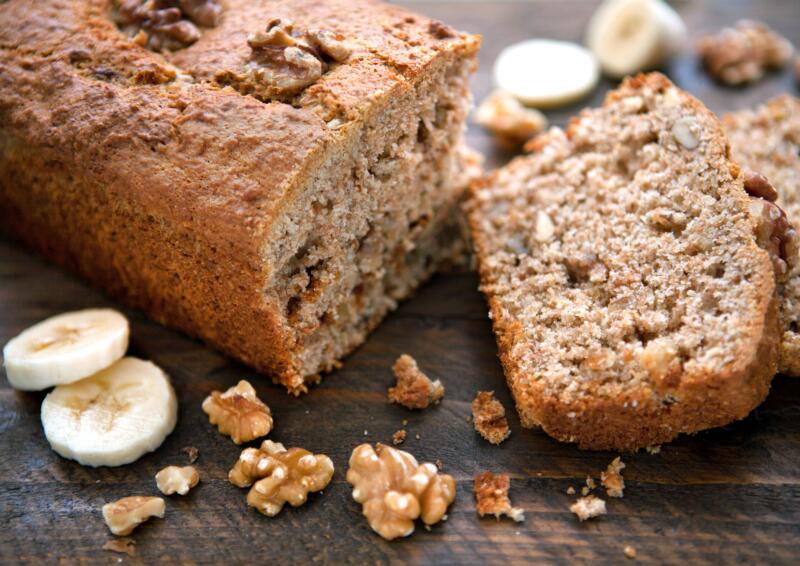
Walnuts and banana bread share a long-standing relationship.
They are a classic choice that pairs well with the flavors of brown butter, vanilla, and cinnamon often found in banana bread.
To use walnuts in your banana bread, start by toasting them lightly to enhance their flavor.
Once cooled, chop them into small pieces. Stir about 1/2 to 3/4 cup of these chopped walnuts into your batter to ensure every slice of your bread has a generous helping of this nutty goodness.
2. Pecans
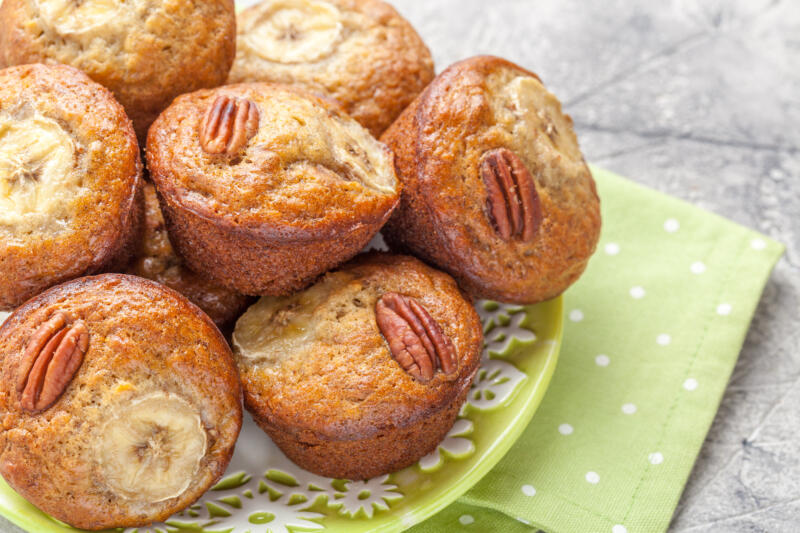
Pecans are another type of nut frequently found in banana bread recipes.
They lend a nutty flavor and a mild crunch that complements the sweet, moist banana bread perfectly.
To incorporate pecans into your banana bread, chop them into small pieces.
Just before you’re ready to transfer your batter into the baking pan, stir in 1/2 to 3/4 cup of these chopped pecans. This step ensures that the pecans are spread evenly throughout the bread.
3. Almonds
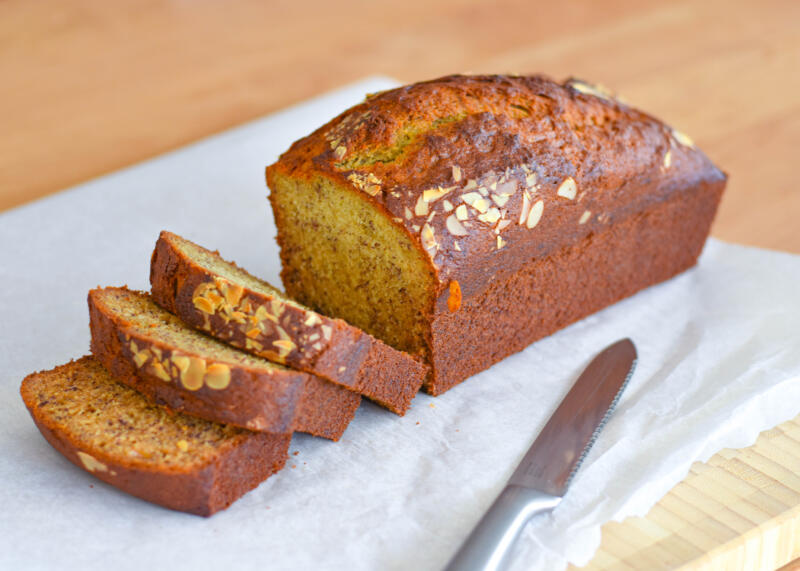
Almonds, with their subtle sweetness and crunch, can be a versatile replacement for other nuts in banana bread, offering a distinct spin on the classic recipe.
To prepare almonds for your banana bread, you can either chop them into small pieces or toast them lightly to bring out their flavor.
Stir in about 1/2 cup of these prepared almonds into your batter for a delightful crunch in every bite.
4. Hazelnuts
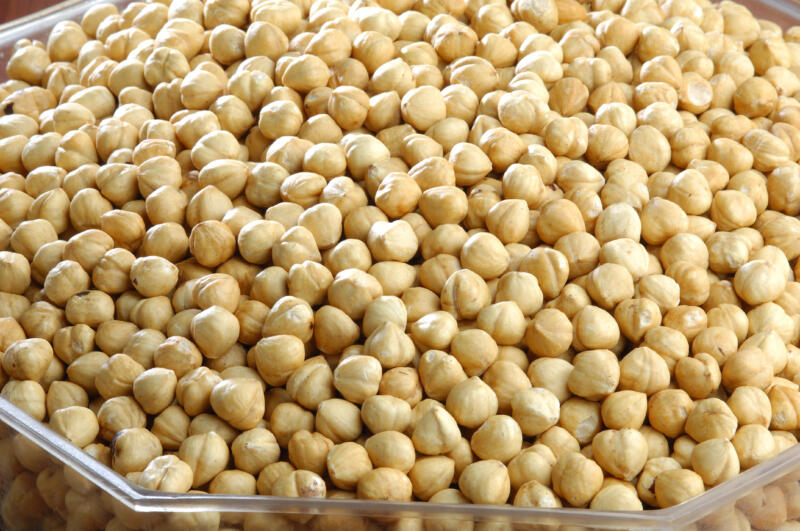
Hazelnuts are a delightful addition to banana bread, offering a unique flavor and crunch that sets them apart from other nuts.
Their rich, slightly sweet flavor pairs wonderfully with the natural sweetness of ripe bananas, while their crunch adds a pleasing contrast to the soft bread.
It’s important to use fresh hazelnuts to ensure the best taste.
Toast them lightly to enhance their flavor, then chop them into small pieces before stirring them into your batter.
The result is a banana bread with a distinct hazelnut twist that’s sure to impress.
5. Macadamia Nuts
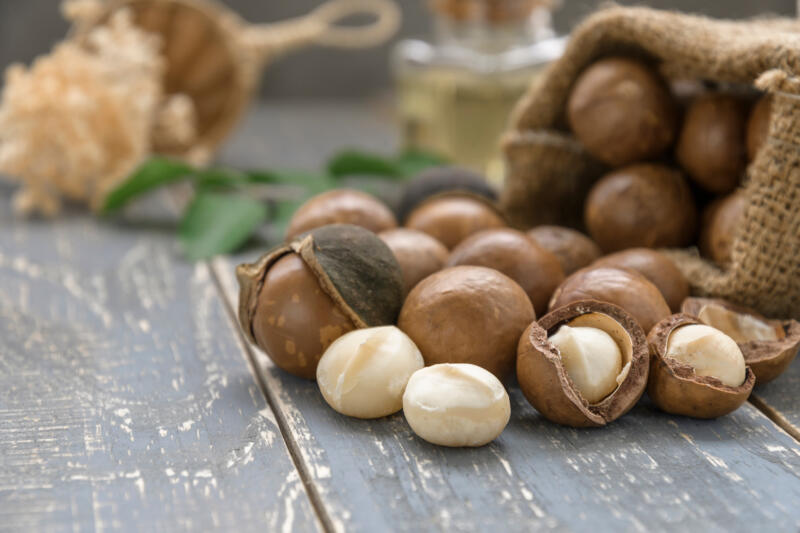
Macadamia nuts are a delicious and somewhat exotic option for banana bread.
Known for their rich, buttery flavor and soft crunch, macadamia nuts can elevate your banana bread to new gourmet heights.
To prepare macadamia nuts for your banana bread, toast them lightly to bring out their unique flavor, then chop them into small pieces.
Stir about 1/2 cup of these prepared nuts into your batter to ensure they’re evenly distributed throughout your bread.
The result is a banana bread with a tropical twist that’s as delightful to eat as it is to bake.
6. Cashews

Cashews are another type of nut that can be used in banana bread.
They have a unique flavor that’s slightly sweet and buttery, and a soft crunch that adds a pleasing texture to the bread.
For a richer taste, lightly roast the cashews in a pan until they achieve a golden hue. After cooling, dice them finely and mix them into your batter.
The result is a banana bread with a subtle cashew flavor that’s sure to delight.
7. Sunflower Seeds
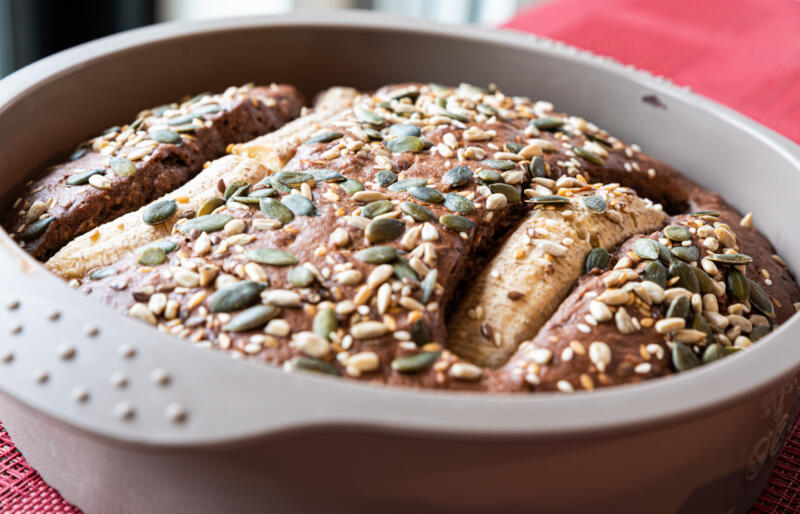
Sunflower seeds might not be the first thing that comes to mind when you think of banana bread, but they’re a unique and less common option that’s worth exploring.
These tiny seeds add a mild, nutty flavor and a subtle crunch to the bread.
For your banana bread, lightly roast the sunflower seeds in a dry skillet until they turn golden brown.
This enhances their flavor and makes them even crunchier. Stir about 1/4 cup of these toasted seeds into your batter to add a hint of crunch and a unique flavor to your banana bread.
Preparing the Nuts
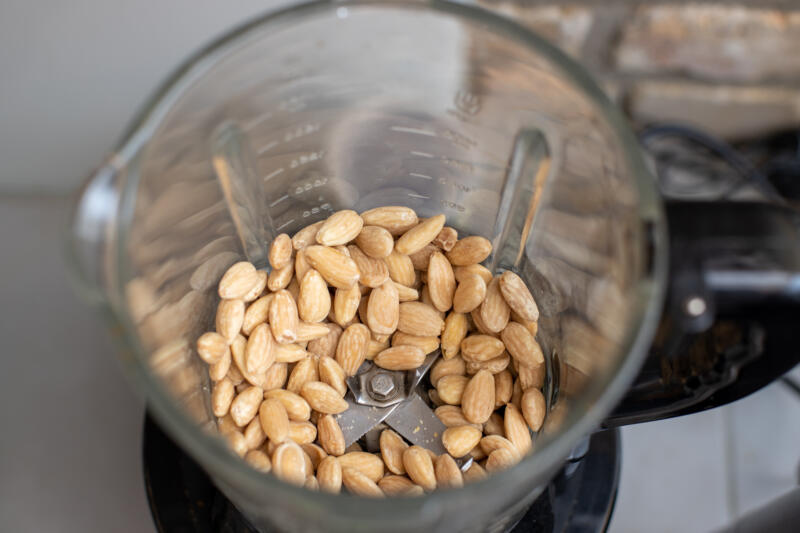
Before we can add the nuts to our banana bread, we need to prepare them properly. This involves two main steps: chopping and toasting.
Both of these steps are crucial in enhancing the flavor and texture of the nuts, ensuring they complement the banana bread perfectly.
However, if you’re in a hurry, you can skip the toasting step. The nuts will still add a delightful crunch and flavor to your bread, even if they’re not toasted.
Chopping the Nuts
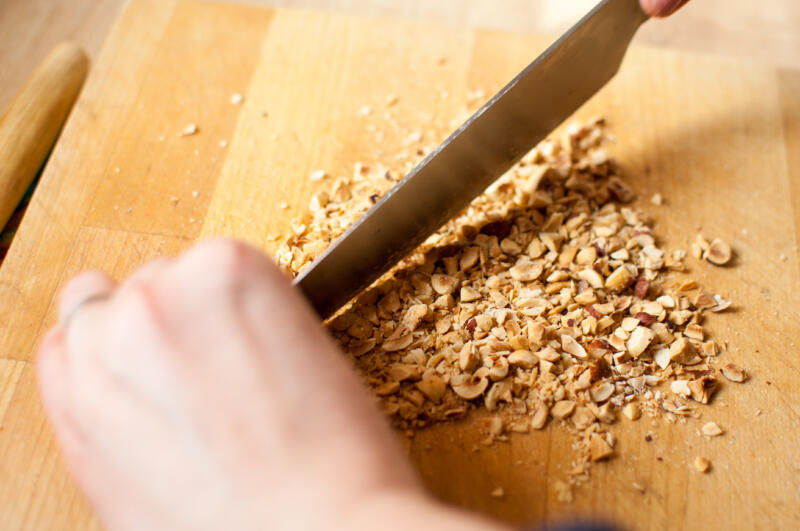
Chopping nuts for banana bread can be achieved manually or with a chopper or food processor.
Almonds, hazelnuts, and macadamia nuts, due to their hard texture, require a sharp knife and a sturdy cutting board for manual chopping.
Cashews, although softer, can be tricky due to their curved shape.
For manual chopping, slice cashews lengthwise and then into smaller pieces.
For macadamia nuts or almonds, make an initial cut with pressure, then proceed to chop into smaller pieces.
An alternative manual method involves a rolling pin.
Place the nuts in a sealable bag, then roll the pin over them with firm pressure until they reach your desired size.
This prevents scattering and allows control over the size of the pieces.
For a faster approach, use a food processor, blender, or electric chopper. Pulse the nuts in short bursts to prevent over-processing.
Regardless of the method, aim for pieces small enough to distribute evenly in the bread, but large enough to maintain their crunch.
Toasting the Nuts
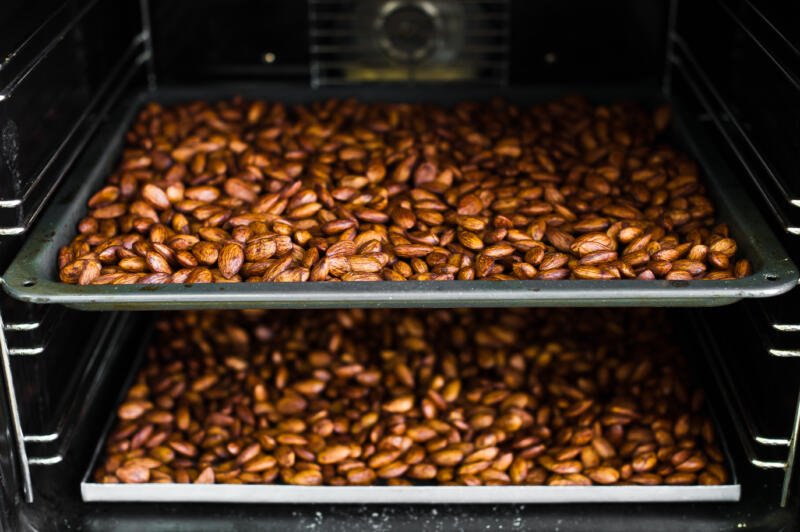
Toasting the nuts is the next step in preparing them for your banana bread.
This process enhances the flavor of the nuts and adds a delicious crunch to the bread.
You can toast a variety of nuts for your banana bread, including pecans, walnuts, almonds, pistachios, and cashews.
Just lay out the diced nuts on a baking tray and bake them at 350°F (175°C) for roughly 10-15 minutes, or until they turn golden and emit a pleasant aroma.
Adding the Nuts to Banana Bread
Now that our nuts are prepared, it’s time to add them to our banana bread. But before we do that, we need to prepare our batter.
Combining Dry and Wet Ingredients Separately

In the process of making banana bread, always mix the dry and wet ingredients in separate bowls. This step ensures a consistent blend of ingredients throughout the batter.
The dry ingredients typically include flour, salt, and baking soda. These ingredients give the bread its structure and help it rise.
On the other hand, the wet ingredients, such as butter, sugar, eggs, mashed bananas, and milk, add moisture and flavor to the bread.
Once these ingredients are combined separately, they can be mixed together to create the final batter.
Stirring in the Nuts
Once you’ve combined your dry and wet ingredients, it’s time to stir in the nuts.
Adding the nuts at this stage ensures they are evenly distributed throughout the banana bread batter.
While the amount of nuts you add can be adjusted based on personal preference, a good starting point is about 1/2 to 3/4 cup. This provides a balanced flavor and texture, ensuring every bite of your banana bread has a bit of that delightful nutty crunch.
Closing Thoughts
Adding nuts to banana bread is a simple step that can significantly enhance the flavor and texture of your bread.
Whether you prefer the classic taste of walnuts, the rich flavor of pecans, the subtle sweetness of almonds, or the unique crunch of hazelnuts, there’s a nut out there for every banana bread lover.
Don’t be afraid to experiment with different types of nuts to find your personal favorite. And remember, the best banana bread is the one you enjoy the most.
So, what are you waiting for? Get baking, and let us know how it goes!
We’d love to hear your thoughts, questions, and comments.